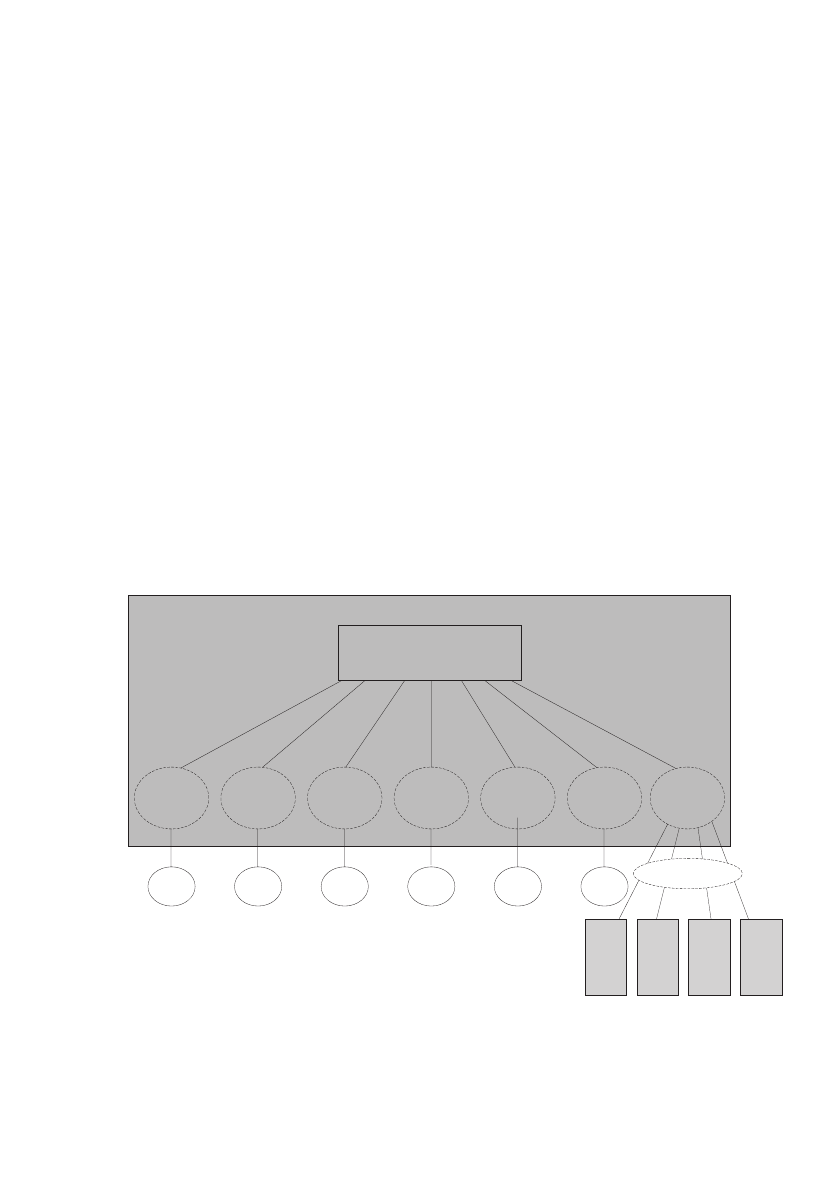
53
CrossFire 8600/8605 Token-Ring Switches v. 1.2, P/N: 710001641 Preparing for Installation
The Next Step
Typically, the first point of congestion in this newly configured network would be
the servers. Because the usual mode of operation for a Token-Ring adapter is half-
duplex, the servers can either send or receive information with one other segment
attached to the switch. If the server adapters are replaced with full-duplex adapters,
such as the Olicom OC-3118 or the Olicom OC-3137, and are attached as single-
station segments as shown in Figure 11, they can send and receive data
simultaneously. The capacity of each server is now 32 Mbps per port.
However, network congestion is not always at the backbone level. In Figure 12, the
two MAUs and six bridges have been replaced by a single switch. Internally, the
switch is configured with one BRF and seven CRFs, allowing the switch to replace
the MAUs and bridges without the need for further reconfiguration. This
configuration greatly improves performance by allowing switching directly from
ring to ring. The four servers, each with a full-duplex connection to the switch, have
been grouped in CRF 5.
If even better performance is needed, the switch shown in Figure 12 can be replaced
with a stack of switches. A stack can provide up to 224 ports, making it feasable to
connect workstations directly to a switch port. A direct connection provides a
dedicated 32 Mbps for users with high bandwidth requirements.
Figure 12. Replacing SRBs with CrossFire 8600 or CrossFire 8605
1 2
CRF 2
3
CRF 3
7
CRF 7
8
CRF 8
9
CRF 9
Server
Switch
CRF 5
Server Server Server
32 Mbps
CRF 1
BRF


















